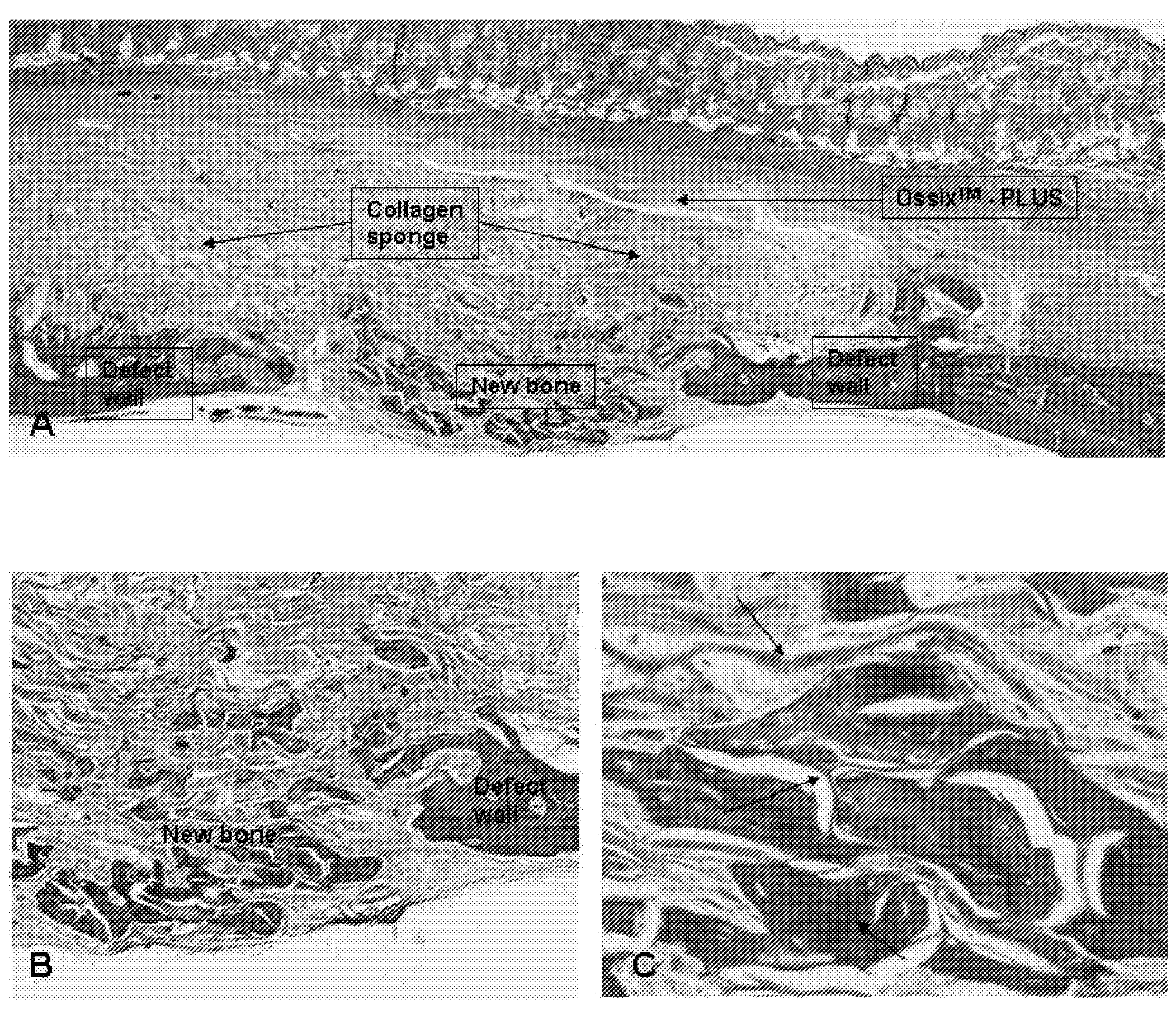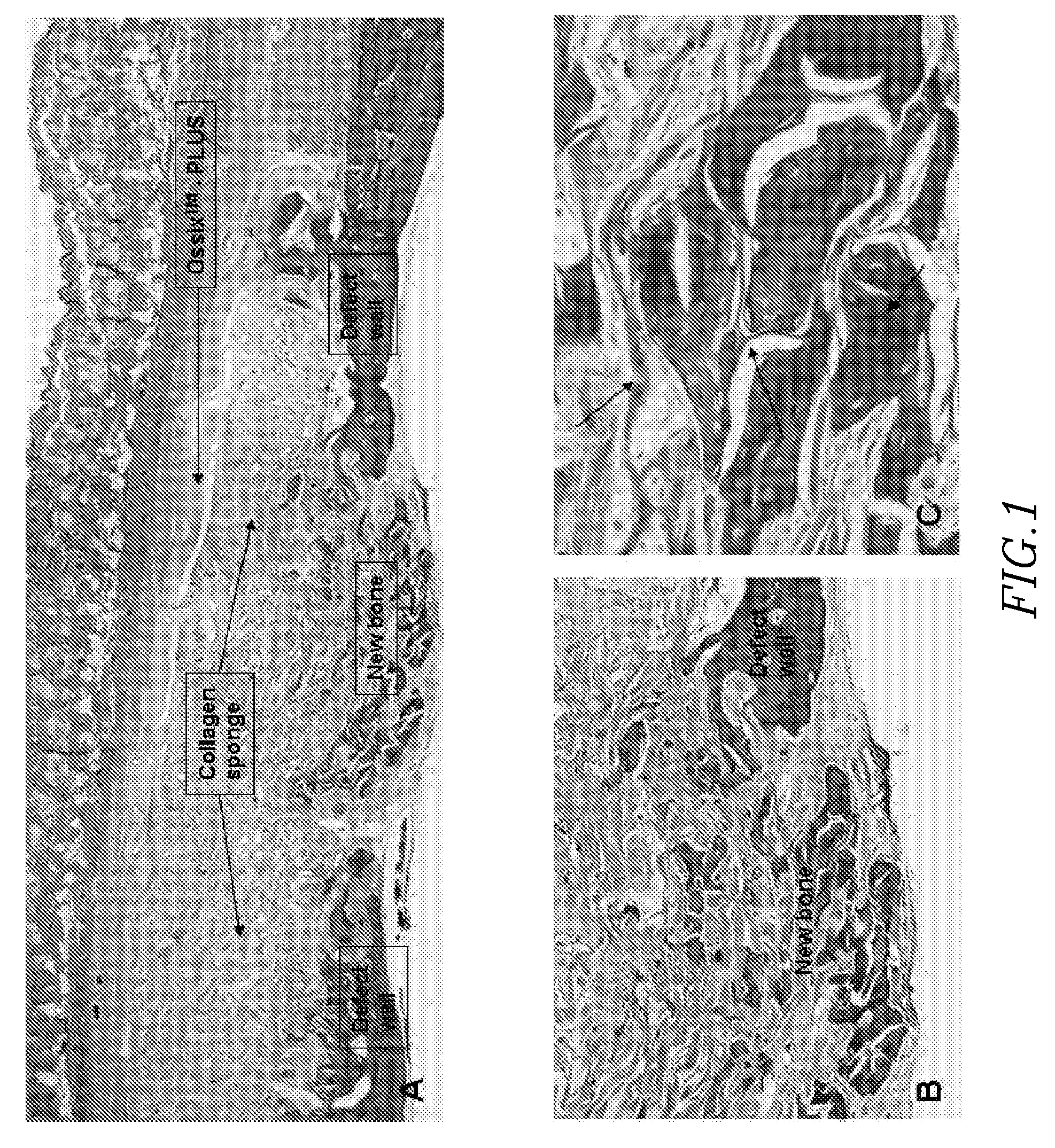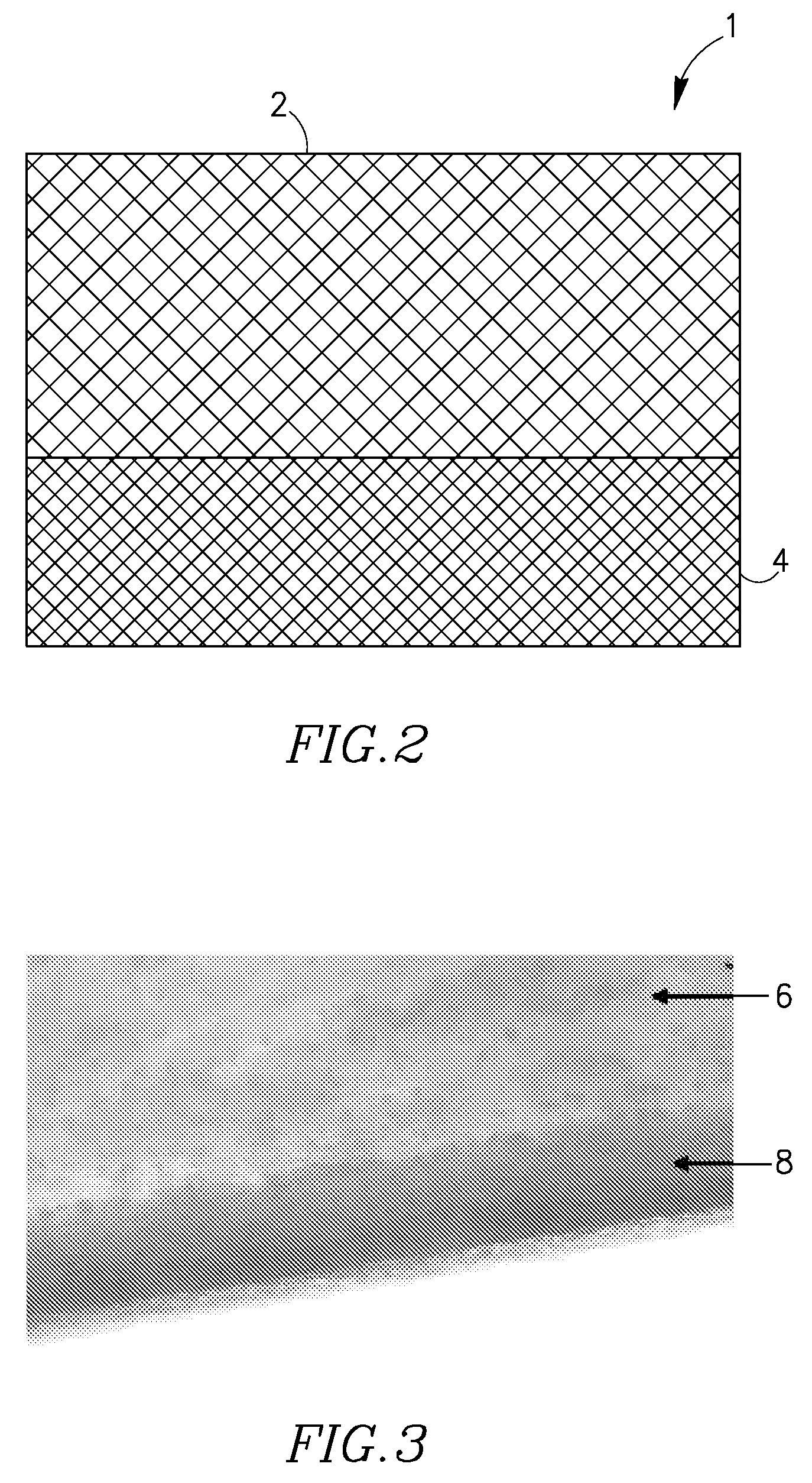Composite implants for promoting bone regeneration and augmentation and methods for their preparation and use
- Summary
- Abstract
- Description
- Claims
- Application Information
AI Technical Summary
Benefits of technology
Problems solved by technology
Method used
Image
Examples
example 1
[0065]Porcine fibrillar collagen was prepared as described in detail in the U.S. Pat. No. 6,682,760, incorporated herein by reference in its entirety. The fibrillated collagen was concentrated by centrifugation at 4500 rpm. All centrifugations (unless specifically stated otherwise) were done using a model RC5C centrifuge with a SORVALL SS-34 rotor commercially available from SORVALL® Instruments DUPONT, USA.
[0066]The fibrillated collagen concentration after centrifugation was 75 mg / mL (as determined by Lowry standard method).
[0067]50 milliliters (50 mL) fibrillated collagen were poured into a 140 mm×120 mm stainless steel tray. The fibrillated collagen was equally dispersed and covered with a mesh (Propyltex 05-1 25 / 30, commercially available from SEFAR AG, Heiden, Switzerland), A perforated polystyrene plate was placed on top of the mesh and a 5 kilogram weight was placed on top of the plate in order to compress the fibrillated collagen. The compression lasted for 18 hours at 4° C....
example 2
[0071]Porcine fibrillar collagen was prepared as described in detail in the U.S. Pat. No. 6,682,760, incorporated herein by reference in its entirety. The fibrillated collagen was concentrated by centrifugation at 4500 rpm. All centrifugations (unless specifically stated otherwise) were done using a model RC5C centrifuge with a SORVALL SS-34 rotor commercially available from SORVALL® Instruments DUPONT, USA.
[0072]450 mL of purified collagen (concentration: 2.73 mg / mL) were mixed with 50 mL fibrillation buffer (as described in detail in the U.S. Pat. No. 6,682,760) and poured into a tray. The mixture was incubated for 18 hour at 37° C. to form a gel. The fibrillated collagen was covered with a mesh (Propyltex 05-1 25 / 30, commercially available from SEFAR AG, Heiden, Switzerland), A perforated stainless steel plate was placed on top of the mesh and a 1.9 kg weight was placed on the gel for 18 hours at 37° C. to compress the gel to form a membrane.
[0073]After the compression, the weigh...
example 3
[0075]Porcine fibrillar collagen was prepared as described in detail in the U.S. Pat. No. 6,682,760 incorporated herein by reference in its entirety. The fibrillated collagen was concentrated by centrifugation at 4500 rpm. All centrifugations (unless specifically stated otherwise) were done using a model RC5C centrifuge with a SORVALL SS-34 rotor commercially available from SORVALL® Instruments DUPONT, USA.
[0076]450 mL of purified collagen (concentration: 2.73 mg / mL) were mixed with 50 mL fibrillation buffer (as described in detail in the U.S. Pat. No. 6,682,760) and poured into a tray. The mixture was incubated for 18 hour at 37° C. to form a gel. The fibrillated collagen was covered with a mesh (Propyltex 05-1 25 / 30, commercially available from SEFAR AG, Heiden, Switzerland), A perforated stainless steel plate was placed on top of the mesh and a 1.9 kg weight was placed on the gel for 18 hours at 37° C. to compress the gel to form a membrane.
[0077]After the compression, the weight...
PUM
| Property | Measurement | Unit |
|---|---|---|
| Fraction | aaaaa | aaaaa |
| Density | aaaaa | aaaaa |
Abstract
Description
Claims
Application Information
 Login to View More
Login to View More - R&D
- Intellectual Property
- Life Sciences
- Materials
- Tech Scout
- Unparalleled Data Quality
- Higher Quality Content
- 60% Fewer Hallucinations
Browse by: Latest US Patents, China's latest patents, Technical Efficacy Thesaurus, Application Domain, Technology Topic, Popular Technical Reports.
© 2025 PatSnap. All rights reserved.Legal|Privacy policy|Modern Slavery Act Transparency Statement|Sitemap|About US| Contact US: help@patsnap.com



